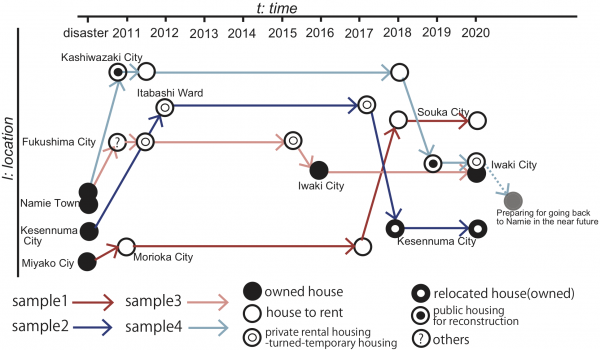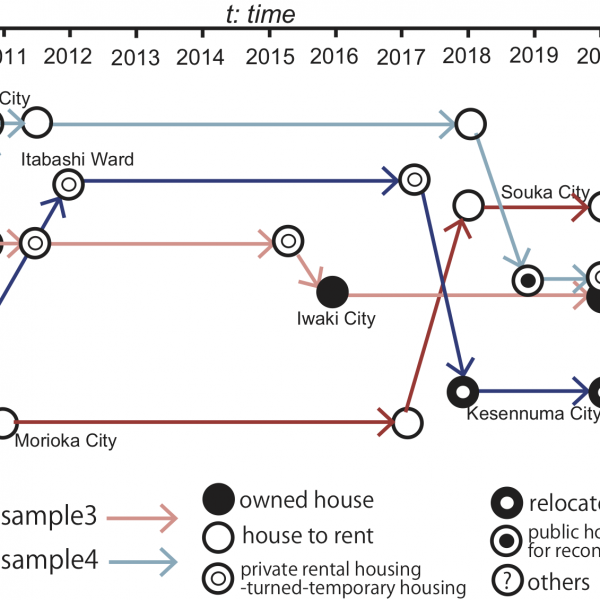IINU021003_working-paper
How did Disaster Victims Migrate after the Great East Japan Earthquake?: Long-Term Recursive Migration Model after Super Disasters
by Rena Koseki, Eiji Hato
Abstract
This study focuses on long-term recursive migration after a super disaster and describes the dynamic migration process based on the ever-changing situation and future utility after a disaster. As natural disasters become more severe due to climate change, it is urgent to establish aid schemes for disasterinduced migration. Although various case studies have clarified the relationship between disasters and migration, few studies have focused on the long-term migration process after disasters. We aim to model the long-term migration with a discounted recursive logit model where victims choose their location and relocation timing considering the future utility. As a case study, we adapted the model to the 10-year residential history of the Great East Japan Earthquake victims and confirmed the usability of the model. The time discount rate is estimated to be smaller for the victims in Fukushima Prefecture, who were forced to evacuate from their hometowns due to the nuclear power plant accident and continued to be in an uncertain situation for a long period. The result indicates that it was difficult for them to choose a place to live with an eye on the future due to extreme uncertainty. In addition, it shows that the level of income and life cycle would be essential factors for victims to choose their location and timing of housing recovery. This model helps consider not only the scale of reconstruction projects but also their optimal timing because it can incorporate the progress of projects and environmental changes over time.


